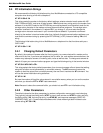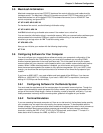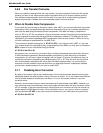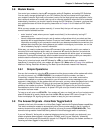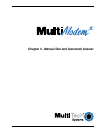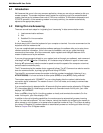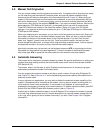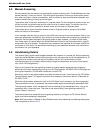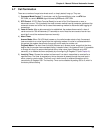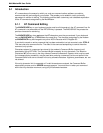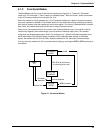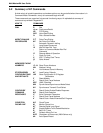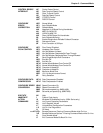
38
MultiModemBA User Guide
4.5 Manual Answering
We have shown that the modem can automatically answer incoming calls. The MultiModem can also
answer manually, under your control. The most typical application involves you and another person,
who, after carrying on a voice conversat0ion, want to convert to data communications between your
modems without having to hang up and dial again.
The problem here is that both modems are in originate mode. For two modems to communicate, one
of them must be in originate mode and the other must be in answer mode. The solution here is to
force either one of the two modems to Answer mode, and the other to Originate mode.
The modem can be forced into either Answer mode or Originate mode by using the Voice/Data
switch on the front of the modem.
In our example, let's say that you and your friend Bill have just had a voice conversation. Both of you
have your telephones connected to your modems, and your modems are connected to computers or
terminals. Set the speed switches to the proper speed on both modems. To switch to Data mode
from Voice mode, you would switch the Voice/Data switch Down (to the Originate position), and Bill
would switch his up to Answer. This switches your modem to the originate on-line mode, and Bill's to
the Answer on-line mode. You would both then hang up your telephone handsets, and continue the
conversation via your keyboards.
4.6 Handshaking Details
This section briefly explains what happens between two modems in a normal call. We are assuming
that there are MultiModems at both the originating and at the answering end of the telephone line. (If
other brands of modems are used with our modems, they will still communicate, but each
manufacturer tends to use slightly different delay timings and sequences, and many of the brands
vary in their LED designations.)
When a call is dialed from the originating modem, the called modem responds to the ringing by
switching into Answer mode and by turning on its RI (Ring Indicator, RS-232C/V.24 Pin 22) signal as
the rings are detected. (The BA-MAC models do not use DTR.)
Note that in order for the called modem to be able to answer the call, it must have a high DTR (Data
Terminal Ready) signal. This signal comes from the computer or terminal to which it is attached, on
RS-232C Pin 20.
When the called modem answers the call, its OH (Off Hook) circuit comes on and the ringing stops.
Two seconds after the call is answered, the called modem begins transmitting its answerback tone.
The originating modem, which has been off hook and waiting for the answerback tone, turns on its
transmitter when it hears the tone. Then after a one second delay, the orignating modem's CD
(Carrier Detect) comes on.
The called modem then responds to the originating modem by turning on its CD (Carrier Detect)
signal, and the handshaking is completed.
Note: With the modem in Reliable or Auto-Reliable mode, some additional handshaking takes place.
This is explained in Section 5.4.8.



